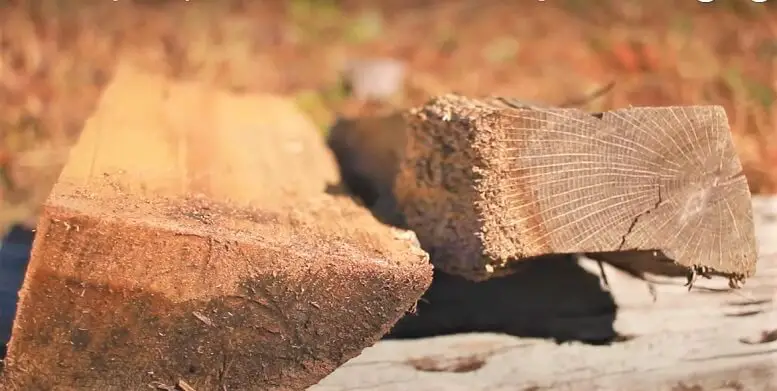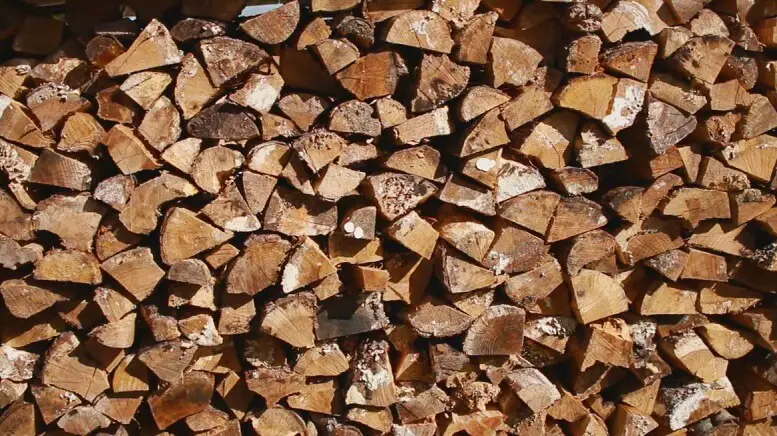Note: This article may contain affiliate links, which means if you make a purchase following our links won’t cost you extra, but we may earn a commission. Learn more
If you’re planning to use wood for cooking or smoking, it’s important to make sure that it is seasoned properly. Seasoned wood is wood that has been left to dry out for a period of time, typically six months to a year.
This process helps to remove the moisture from the wood, making it less likely to cause problems like smoking or flaming. There are a few ways to tell if the wood is properly seasoned.
1. Color: One of the easiest ways to tell if the wood is seasoned is by its color. Freshly cut wood will have a much brighter, more vibrant color than seasoned wood. Seasoned wood will also generally have a more even coloration, while fresh wood can have a more mottled appearance.
2. Texture: Another way to tell if the wood is seasoned is by its texture. Seasoned wood will feel dry and smooth to the touch, while fresh wood will feel moist and slightly sticky. Seasoned wood will also generally be harder than fresh wood.
3. Weight: The third way to tell if the wood is seasoned is by its weight. If the wood is light in weight, it is likely well-seasoned. If the wood is heavy, it may not be as seasoned.
4. Sound: The fourth way to tell if the wood is seasoned is by the sound it makes when tapped. If the wood makes a hollow sound, it is likely well-seasoned. If the wood makes a dull sound, it may not be as seasoned.
5. Splintering: Seasoned wood is less likely to split or crack than fresh wood, as the moisture content of the wood is lower.
6. Burning: Seasoned wood will also generally burn more evenly and slowly than fresh wood. If you’re not sure if the wood is seasoned properly, it’s always better to err on the side of caution and dry it out for longer. Better to have wood that is too dry than wood that is too wet and causes problems.
Relevant Post: Best Outdoor Firewood Rack Cover Or Rack With A Cover
What Happens If Wood is Not Seasoned?
If wood is not seasoned, it will not burn well. Seasoned wood is dry and has a lower moisture content than unseasoned wood. This means that there is less water in the wood to create steam when it burns.
The steam creates pressure and causes the logs to explode. Unseasoned wood also produces more smoke than seasoned wood, which can be a problem for people who are trying to avoid breathing in smoke.
What is Considered Seasoned Wood?
Seasoned wood is simply wood that has been cut and allowed to dry for a period of time, typically six months to one year. The drying process causes the moisture content in the wood to drop below 20 percent, making it more stable and less likely to warp or crack. Seasoned wood is also easier to ignite and produces less smoke when burned.
How Do You Know If the Wood is Dry Enough to Burn?
Assuming you’re talking about firewood, there are a few ways to tell if it’s dry enough to burn. If the wood is freshly cut, it will obviously be too wet to burn. Seasoned firewood should be cut and split at least six months prior to burning, and stored in a dry place – this could be indoors or outdoors, but shelter from the elements is ideal.
You can tell if firewood is sufficiently dry by doing the following test: take a small piece of wood and strike it against another piece of wood – if you hear a dull thud, the wood is still too wet; if you hear a sharp crack, the wood is ready to burn. Another way to test the moisture content of firewood is to use a moisture meter – these devices are relatively inexpensive and available at most hardware stores.

How Long Does It Take to Season Wood?
If you’re wondering how long it takes to season wood, the answer depends on a few factors. First, it depends on the type of wood you’re using. Hardwoods like oak and maple will take longer to season than softer woods like pine.
Second, it depends on the thickness of the wood. Thicker boards will take longer to season than thinner ones. Finally, it also depends on how dry your climate is.
If you live in an area with high humidity, it will take longer for the wood to season properly. Assuming all things are equal, here are some general guidelines for seasoning times:
Hardwoods (oak, maple): 1 year per inch of thickness
Softwoods (pine): 6 months per inch of thickness

How to Tell If Firewood is Bad?
If you’re lucky enough to have a wood-burning fireplace or stove, you know that good firewood is essential. But how can you tell if your firewood is bad? Here are some signs to watch out for:
The wood is spongy or soft: This means that the wood hasn’t been properly seasoned and won’t burn well. There’s mold on the wood: Moldy wood is obviously not going to be good for burning. Not only will it produce less heat, but it can also release harmful toxins into the air.
The ends of the logs are blackened: This is a sign of rot, which means the logs won’t burn well. The logs are discolored: If your logs are more gray than brown, they’ve probably been stored wet and won’t burn well.
Conclusion
Wood that is properly seasoned has a moisture content somewhere between 15 and 20 percent. Seasoned wood is dryer and lighter than unseasoned wood, and it burns more cleanly and with less smoke. You can test the moisture content of your firewood using a moisture meter.
Featured image credit: www.youtube.com
